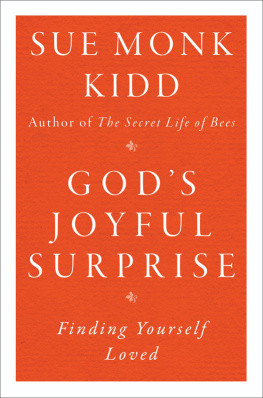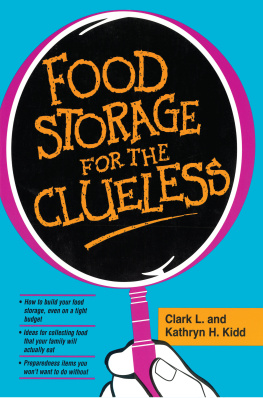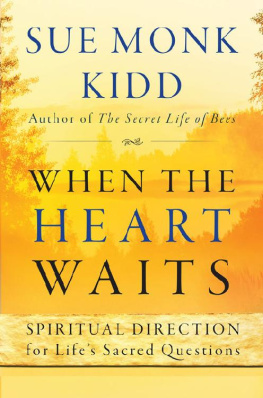
Simon & Schuster, Inc.
1230 Avenue of the Americas
New York, NY 10020
www.SimonandSchuster.com
Copyright 2015 by Chip Kidd
All rights reserved, including the right to reproduce this book or portions thereof in any form whatsoever. For information, address Simon & Schuster Subsidiary Rights Department, 1230 Avenue of the Americas, New York, NY 10020.
TED, the TED logo, and TED Books are trademarks of TED Conferences, LLC.
First TED Books hardcover edition June 2015
TED BOOKS and colophon are registered trademarks of TED Conferences, LLC.
SIMON & SCHUSTER and colophon are registered trademarks of Simon & Schuster, Inc.
For information about special discounts for bulk purchases, please contact Simon & Schuster Special Sales at 1-866-506-1949 or .
For information on licensing the TED Talk that accompanies this book, or other content partnerships with TED, please contact .
Cover and interior design by Chip Kidd Photographs of Goods packaging by Geoff Spear
ISBN 978-1-4767-8478-6
ISBN 978-1-4767-8479-3 (ebook)
For J. D. McClatchy
All photographs by Chip Kidd, using an iPhone 5S, unless otherwise noted.
Early impressions are hard to eradicate from the mind. When once wool has been dyed purple, who can restore it to its previous whiteness?
Saint Jerome, AD 331420
Let me make one thing perfectly clear.
Richard M. Nixon
God was always invented to explain mystery.
Richard P. Feynman
So, what is your first impression of this book?
Well, youre still reading, so it couldnt have been that bad.
Or at least it was intriguing enough.
First impressions are key to how we perceive the world, and are perceived by it. They are our introductions to everything: acquaintances, the workplace, products, experiences, retail stores, the Internet, entertainment, relationships, design. And based on our first impressions, we judge things. We cant help it. Does that sound terrible? We all heard it as children: Dont judge by appearances. But we do, because we live in a visual culture, and our minds instantly react to what we see.
What really matters is not that we judge, but how we do so. Is it with intelligence? Empathy? Compassion?
If you consider the example of design, the dont judge rule doesnt even make sense. Design, by its very nature, demands to be judged when you initially encounter it, because it is supposed to solve a problem. And if thats not happening... thats a problem.
How many forms have you had to fill out that are needlessly complicated? How many websites have you been directed to that you cant figure out how to use? Indeed, the Web is all about first impressions, and the need to be able to understand content at first glance.
As a graphic designer, specifically a designer of book covers, Id say that making a great first impression is not just my interest, its my job. Whether its ink on paper or pixels on a screen, a book cover is not only the face of the text, its your primary connection to it.
But you dont need to be a designer to appreciate problem-solving: whether you are a social worker dealing with government forms, a doctor analyzing medical data, a Web coder, or even a barista trying to figure out the espresso machine, you can tell when a piece of design is working for you or not.
Ive found that the two most effective and fascinating aspects of first impressionsboth the ones I create and those I encounterare at opposite ends of the spectrum: Clarity and Mystery. After more than thirty years as a practicing designer, I continue to be amazed by how these two components work, and what happens when they get mixed up or misused.
And wow, do they. Politicians can be some of the most mysterious people in the world, usually when we need them to be the clearest. And in the age of Too Much Information, weve all seen things that could benefit from a little more mystery (that family with a name that starts with a K comes to mind).
So lets begin with two questions. First:
When should you be clear?
That depends on the message you want to get across, and its nature. You should be clear when you need people to understand you immediately. You want others to be clear when you need vital and specific informationsay, technical guidance for your computer or phone, or when youre lost and you ask someone for directions. In either case, what is needed is clarity, and when its not there we all know the results can be very frustrating. Especially when your GPS cuts out.
A more extreme but not uncommon example is when you hear recordings of 911 calls on the news. I always think, If I were taking the call, would I be able to understand what the situation is? The answer varies, and of course the calls are usually made in moments of intense panic, but these are definitely situations when a person needs to be understood.
If we apply this idea to design in our everyday lives, the examples start to become, well, clear:
Highway signage. Instruction manuals. Alarm clocks. Emergency escape routes. Wedding vows.
When decorationa pretty facade, ornamentation, elaborationreally doesnt matter at all, clarity is most needed.
Clarity is sincere, direct, reasonable, basic, honest, perfectly readable.
No-nonsense.
But when its automatically applied to everything, things can get kind of boring.
Now, lets look at the yin to this yang, and ask:
When should you be mysterious?
Ah, the allure of Mystery. And the fun of it. Or, if were not careful, the disappointment of it. Mystery is an extremely powerful tool; just ask Gypsy Rose Lee (kids, do a Web search) or the creators of Lost . You should be mysterious when you want to get peoples attention and hold it, when you want your audience to work harderwhen, frankly, you have something to hide.
Mystery is: a puzzle that demands to be solved, a secret code you want to crack, an illusion that may not be an illusion at all, a dream youre trying to remember before it fades away.
Mystery, it must be said, can also be terrifying: phantom pain, sudden change, irrational behavior, the loss of power. The threat of the unknown.
In my own work, mystery is hugely important. I design covers for all kinds of books: fiction, nonfiction, poetry, history, memoir, essay, comics. Each demands its own visual approach. Sometimes I want the viewer to get it right away, but more often I want to intrigue him or her enough to investigate the book further (i.e., to open it up, begin to read it, and hopefully buy it).
Mystery, by its very nature, is much more complex than clarity, and I try to create a balance between the two.
* * *
So for the purposes of this book, Im introducing...
The Mysteri-o-meter.
The field of Information Graphics has certainly progressed over the last several decades (thank you, USA Today , for the charts and graphs). The idea is to create a visual piece of communication that can be understood in any languange. The Mysteri-o-meter below is an example of that: a simple scale that marks the balance between Clarity (!) and Mystery (?)the former at 1, and the latter at 10and Ive applied it to all the visual examples in the book.
Note: When something is at one extreme of the scale or the other, it doesnt necessarily mean its good or bad. As with just about everything in life, youll have to take this caveat in context. Some examples will be frustratingly mysterious when they should be clear, and some will be all too clear when more discretion is wanted. And vice versa.

















